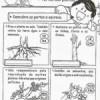
In the midst of an unprecedented drought in Central Texas, U.S, nature revealed a paleontological treasure hidden beneath the waters of the Paluxy River.
Seventy-nine new dinosaur footprints have emerged from the mud and water, providing a fascinating glimpse into prehistoric creatures that lived 113 million years ago. Check out more details below!
see more
Missing link between dinosaurs and birds may be found;…
Researchers claim that German wild boars are radioactive; understand…
The discovery was shared on social media by Dinosaur Valley State Park in Glen Rose, Texas, who described the footprints as a “huge trail of prehistoric six-claw monsters.” fingers.” The revelation occurred in August this year thanks to the drastic reduction in the levels of the Paluxy River due to the drought.
(Image: Dinosaur Valley State Park – Friends/Facebook/Reproduction)
The footprints, fossilized in the limestone of the riverbed, emerged under extreme conditions, with temperatures reaching 52°C. Scientists and paleontologists took advantage of this unique opportunity to collect a significant amount of data, which will be used in a project to map the footprints of these giants.
Park superintendent Jeff Davis explained that the heat and drought are unusual for the region, which made this discovery even more special. Normally, the place where the footprints were found would be submerged under the waters of the river.
The footprints reveal fascinating details about the daily lives of these dinosaurs, including information about their posture, speed of movement and the possibility of moving in groups. Researchers believe the footprints belong to two different species of dinosaurs.
(Image: Dinosaur Valley State Park – Friends/Facebook/Reproduction)
The six-toed imprints were likely left by Sauroposeidon, a long-necked dinosaur that could reach more than 30 meters in height and weigh 39 tons. On the other hand, the three-toed footprints are attributed to a possible Acrocanthosaurus, similar to a Tyrannosaurus rex, weighing 6 tons and 4.5 meters tall.
However, these footprints should not remain visible for long. With the next rain, they will be buried by sediment and eventually erode.
Before that happens, scientists are working hard to map, photograph, measure and create casts of the footprints in order to preserve these incredible fragments of Earth's history.
It is worth noting that this is not the first time that a drought has exposed dinosaur footprints in Dinosaur Valley State Park. Last year, a similar discovery captured the world's attention, and these footprints are currently on display at the American Museum of Natural History in the city of New York.
This revelation offers a precious glimpse into the distant past and continues to inspire a passion for paleontology and the incredible story of life on Earth.


